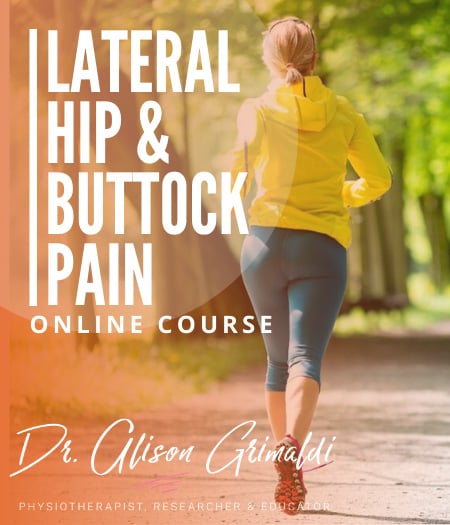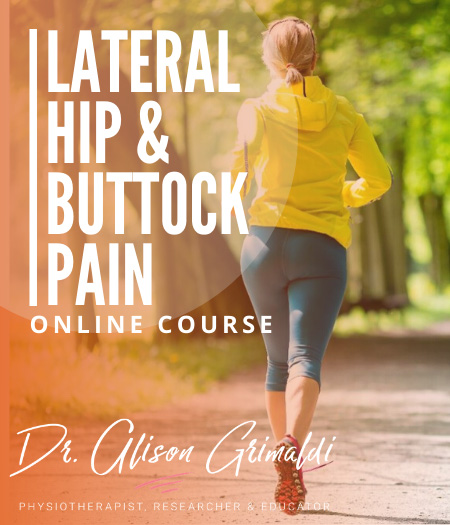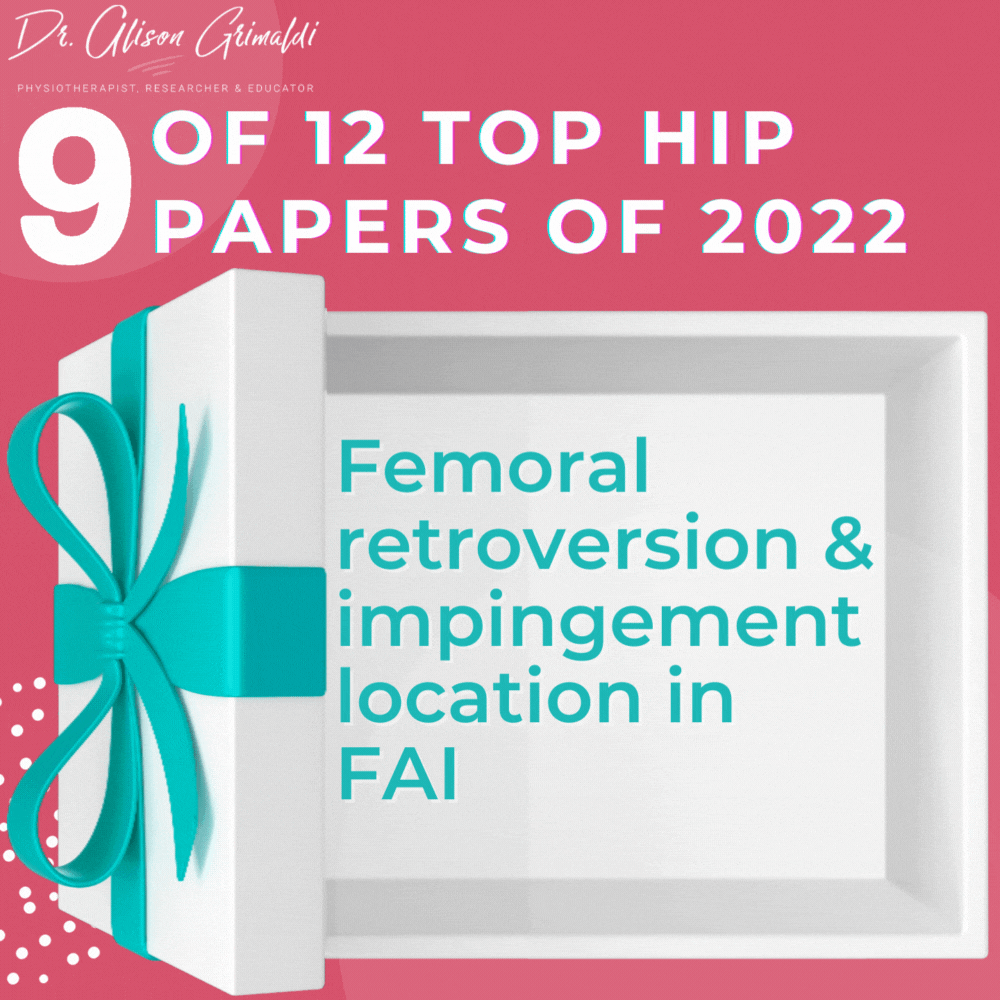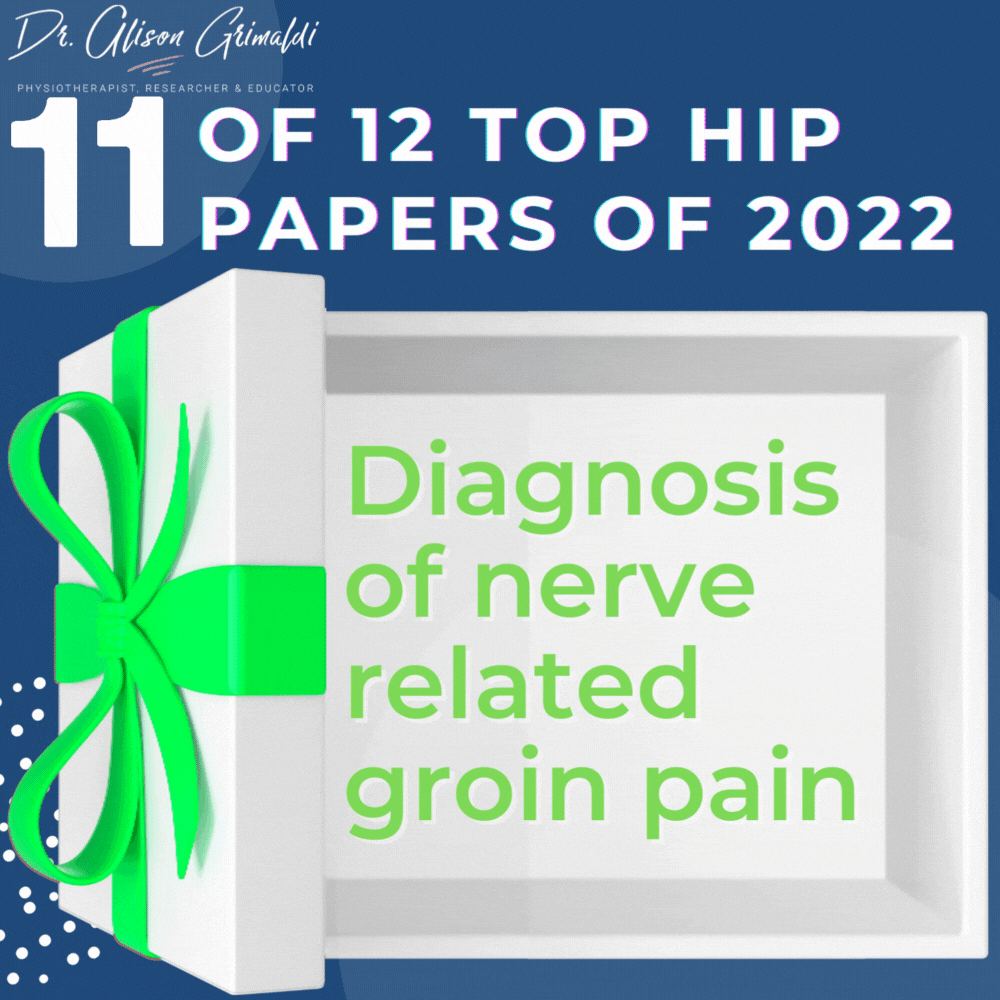10 of 12 Top Hip Papers of 2022 | Hormone therapy for GTPS

It's day 10 of my 12 Top Hip Papers series of miniblogs for 2022! If you missed Day 9, you'll find a link at the bottom of this page to take you back. For day 10 we'll be leaving hip joint related pain and looking at a new paper from the GLoBE Trial, looking at gluteal tendinopathy, or to mirror the terminology used in this paper, Greater Trochanteric Pain Syndrome (GTPS). This paper reports the effects of menopausal hormone therapy for GTPS. Does it help? Read on to find out!
Discover our Lateral Hip & Buttock Pain Course
If you enjoyed this blog, you might like to take the online course on Anterior Hip & Groin Pain - 6 hours of guided online video content. Examine various joint-related, soft tissue-related and nerve-related conditions associated with lateral hip and buttock pain, their mechanisms, associated impairments, clinical diagnostic tests and management approaches. To learn more, take the lateral hip and buttock pain online course, or join me in an online or practical lateral hip and buttock pain workshop.

10 of 12 Top Hip Papers of 2022: Does menopausal hormone therapy, exercise, or both improve pain and function in postmenopausal women with Greater Trochanteric Pain Syndrome?
The GLoBE trial has been the first and only trial so far that has investigated the potential role of menopausal hormone therapy for GTPS. GTPS is most prevalent in post menopausal women, with the reduction in female sex hormones thought to be an important reason for the high prevalence in this population.
What is the link? Oestrogen is an important hormone for maintaining tendon health in women, and decline in oestrogen levels with menopause have been linked with reductions in collagen synthesis and tensile strength and higher risk of tendon rupture. Previous research has reported that oestrogen supplementation can stimulate collagen synthesis, thereby improving the mechanical properties of tendon. So, can hormone therapy for GTPS help women with this condition?
Study Aim:
The aim of this study was to determine the effect of menopausal hormone therapy and exercise, in combination and isolation, on tendon pain and function in postmenopausal women with GTPS.
What was done:
GLoBE Trial Cohort
- 132 female participants, on average aged around 60 years of age
- Postmenopausal women:
- ≥ 52 wk of menstruation cessation,
- and/or a serum estradiol of 0-120 pmol/L and an FSH .20 IU/L (blood test markers of menopause).
- Lateral hip pain reproduction in 3 of 5 pain provocation tests:
- Trendelenburg test,
- palpation of the greater trochanter,
- FABER,
- resisted external derotation test, and
- modified resisted external derotation test.
Diagnosis of gluteal tendinopathy was not confirmed on MRI, which is why the authors elected to use the diagnostic term GTPS.
GLoBE Trial Study Design
This trial used a 2 x 2 factorial study design, to allow concurrent investigation of 2 interventions:
- hormone cream versus placebo cream, and
- GLoBE exercise intervention versus sham exercise intervention.
This produced 4 different study groups:
- hormone cream + GLoBE exercise intervention
- hormone cream + sham exercise intervention
- placebo cream + GLoBE exercise intervention
- placebo cream + sham exercise intervention
All groups received tendon specific education, and some form of exercise.
You can read more about the GLoBE and LEAP exercise programs for GTPS/gluteal tendinopathy here.
The primary outcome measure was the VISA-G questionnare, a tendon specific patient rated outcome measure.
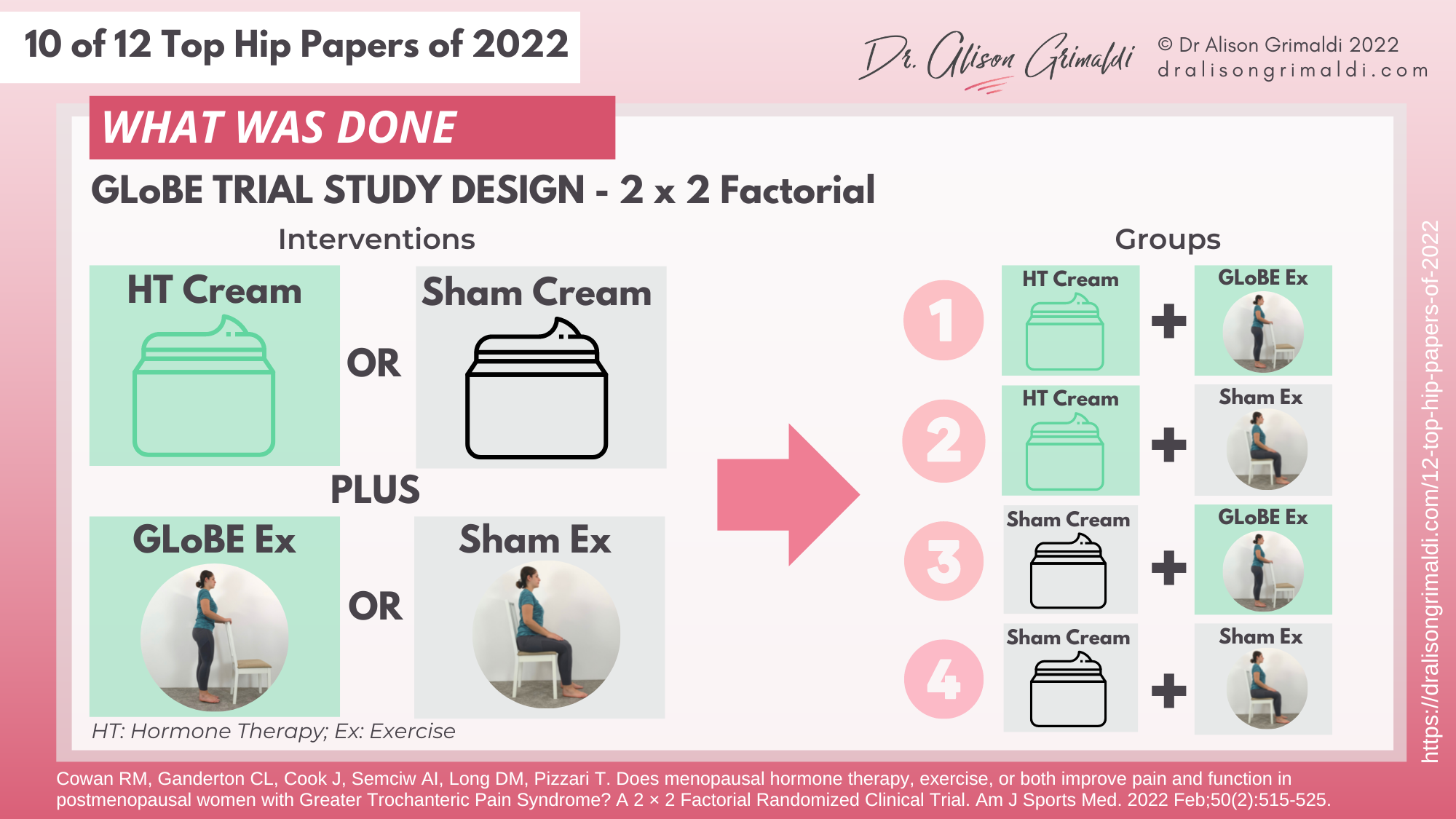
Key Findings:
These were the main findings of the study:
- VISA-G scores improved over time, regardless of intervention.
- There were no differences between sham and GLoBE exercise interventions.
- There were no significant interaction effects between combinations of exercise and cream.
However, further analysis showed that:
- A lower BMI was significantly associated with a better VISA-G outcome.
- There was a significant interaction between cream and Body Mass Index (BMI).
So, when participants were stratified by levels of BMI:
- Those with a BMI less than 25 who used the hormone cream had significantly higher VISA-G scores at all time points compared with those in the placebo cream group.
- There was no difference between the hormone therapy and placebo groups for participants with a BMI ≥ 25.
Clinical Implications:
As the first investigation into the effect of hormone therapy for GTPS, this study has found that hormone therapy, together with education and some form of exercise, is most likely to be helpful for those with lower BMI (<25).
The authors suggest that higher BMI may have reduced the effectiveness of a transdermal hormone cream applied to the skin. Sublingual (under the tongue) hormone therapy may be more effective as it has been shown to result in higher levels of serum estradiol and greater absorption of progesterone. Further research still needs to be done in this space, to test the effectiveness of sublingual hormone therapy for GTPS.
However, this research suggests that hormone therapy for GTPS could be considered as an adjunct to an education and exercise program for suitable candidates. It would be interesting to test the combination with a different exercise program such as the LEAP trial program. Strategies to reduce BMI may improve likelihood of effectiveness of transdermal hormone therapy, but also reduce adverse physical and metabolic effects of high BMI on tendon health.
Another great Lateral Hip Pain blog
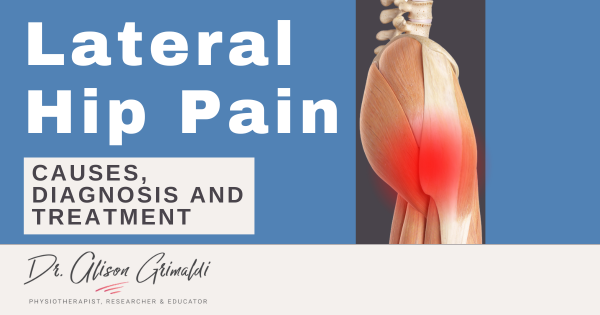
Lateral Hip Pain: Causes, Diagnosis, and Treatment
Like to learn more about assessment and treatment of patients with gluteal tendinopathy/ GTPS?
In this course, you can find detailed information on pathoaetiology, assessment and management of lateral hip pain associated with gluteal tendinopathy (GTPS) and many other conditions.
Take the online course or join me in a workshop to practise diagnostic techniques and specific exercises from the successful LEAP trial program for gluteal tendinopathy (and much more).
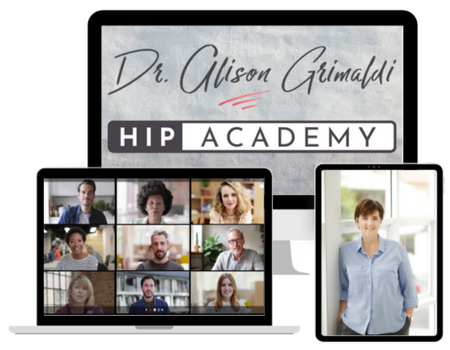
Have you heard about Hip Academy?
Enjoy the benefits of a world class educational Hip Program, specifically designed by Dr Alison Grimaldi to help improve your knowledge surrounding the Hip and Pelvis, and become an expert in your field.
With all Hip Courses included, enjoy all the extra inclusions, including; access to the entire eBook series, growing video library, expanding PDF resource centre, regular member meetings, forums + lots more!
This online course is included in Hip Academy and Hip Academy members receive discounts for online workshops.
I hope you enjoyed the infographics and key learnings from Day 10 of my 12 Top Hip Papers of 2022. There are 2 more papers to come, so stay tuned and return to the blog page each day to see what other top papers and infographics I have for you!
If you missed yesterday's Hip Paper, click the link below to catch up!

